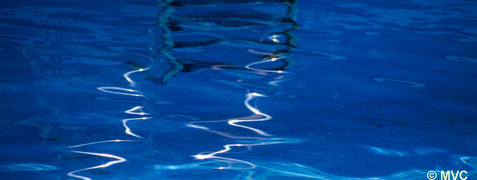Swimming Pools

The message is clear - swimming is good for you!
Many people are not aware just how beneficial swimming can be but the medical profession has always rated swimming very highly as a form of exercise, particularly for heart and lung fitness, joint suppleness and muscle power. The message is clear - swimming is good for you!
In addition, swimming has a major advantage over other forms of exercise in that age is no barrier - whether you are five or eighty-five, you can enjoy your daily dip.
Swimming pools come in all shapes and sizes. They can be above-ground prefabricated pools, below-ground liner pools or top of the range reinforced concrete tiled. Naturally, there is a considerable difference in price.
Below ground domestic pools range in size and can be rectangular or freeform. Whereas the latter may look better, it does not lend itself so readily to swim training or to a pool cover. Depth-wise, current trends are for pools that are not excessively deep - these are safer and are cheaper to build and to run (shoulder deep, 4'-6" (1.35m), is the most popular option).Liner pools are normally constructed with concrete blocks plastered internally and fitted with a PVC liner for waterproofing. The top of the range is the reinforced concrete tiled pool, which is a lifetime investment.
How does a pool work?
To keep a swimming pool in good condition, i.e. clean, warm and pure, it is necessary to remove the total body of water from the pool several times a day, pass it through the filters and sanitise it by one means or another. The filters remove the physical dirt from the water and the sanitiser kills any bacteria. In a skimmer or freeboard pool, the water is removed from the pool through floor sumps and skimmers located at water level (to remove debris or dust floating on the surface). It is then passed through the filters by means of the circulating pumps, and is sanitised (and, if necessary, heated) before returning to the pool via return water inlets located in the walls or floor. In commercial pools, the skimmers are frequently replaced by an overflow channel. In this case, the water overflows constantly into a balance tank, from which it is pumped back into the circulation system. This type of pool is called a deck-level or overflow pool. The time required for all the pool water to pass through the filters, etc. is called the 'pool turnover' time. In the case of commercial pools, this time can be as low as 3 hours, so that the pool water passes through the filters 8 times every 24 hours. In the case of a domestic pool, however, a turnover time of 6 - 8 hours is quite sufficient, because usage is so low.
There are many ways to sanitise pool water. Chlorine is by far and away the most popular and the risk of overdosing or under-dosing is now greatly reduced by the use of automatic computerised dosing equipment. Bromine is also used as a sanitiser but its use is generally confined to Jacuzzi spas as it is reputed to sanitise more efficiently at higher temperatures. Other non-chemical forms of sanitation include ozone, ultra-violet light and ionisation. There are advantages and disadvantages to all of these systems (in some cases, the price!) but all of them require a chlorine (or bromine) backup to cover the possibility of a sudden contamination of the tank of pool water. When used in conjunction with a non-chemical system, however, the chlorine level can be reduced.